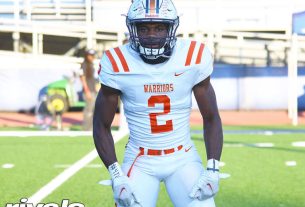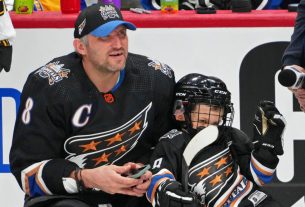STILLWATER — As Oklahoma State athletic director Chad Weiberg began his presentation on the $325 million plan for upgrades and additions to the university’s athletic village, he called it a road map.
“This vision plan provides a road map for the next phase of an athletic village that will be unrivaled in college sports,” Weiberg said after a brief video presentation to the media on Monday morning in the football team room of Boone Pickens Stadium.
Terms like “vision plan” and “road map” accurately describe the monumental undertaking Weiberg and the OSU athletic department have laid out.
“Menu” might also describe the plan, particularly for those who will contribute funds to the $325 million venture.
Because OSU donors have some power in this endeavor.
Not in the planning or the proposals, but in the priority.
More:What is OSU football star Tyler Lacy’s goal at NFL Combine? ‘Show people my explosiveness’
What’s on the Oklahoma State facility upgrade list?
The menu has been provided: a new softball stadium, indoor track and field complex, basketball and wrestling practice facilities. Upgrades to the football stadium, Karsten Creek Golf Club and Pedigo-Hull Equestrian Center. A new football operations center, upgraded academic and training facilities for athletes and a park-like welcome area outside Gallagher-Iba Arena.
But OSU can’t build all of them at once, so how will the projects be prioritized?
By the donors.
“That is part of why we wanted to put the whole road map out in front of the family,” Weiberg said. “The athletic department didn’t want to be the ones determining the priority. We didn’t want to be the ones determining the speed or timeline. The priority, the timeline, that will all be set by our supporters and their willingness to step up and help make these projects possible.”
Donors can look at the menu and make their own determinations for what they’d like to fund.
Does a donor want to see the new softball stadium at the top of the list? Funding is the way to make it happen.
Same for wrestling or track or any other item off the menu.
Plenty of tasty options for someone who wants to make their mark on OSU athletics.
With that, there is no timeline available for how long this plan will take to complete. The intricate details of the facilities have not been explored. But Weiberg and his team are ready to go forward with any of the projects when funding arrives.
The athletic department is adding to its debt load — which is minimal compared to OSU’s peer universities — with the ongoing project to renovate central seating areas on the north side of Boone Pickens Stadium. But Weiberg wants cash flow to fund the rest of the vision plan.
More:What is OSU football star Tyler Lacy’s goal at NFL Combine? ‘Show people my explosiveness’
“As far as the timeline, we don’t have one specifically, for a couple of different reasons,” Weiberg said. “One, this will all be predicated on the resources, gathering the resources needed to do these. But regardless, it is a years-in-the-making project. Even if we have all the resources readily available now, you can see that this project is going to take a lot of time to design and plan for and build.
“The timeline will be set by how we are able to gain the resources.”
Overall, the plan shows OSU’s — and specifically, Weiberg’s — commitment to athletics across the board at a time when football is a mainstream topic thanks to conference realignment.
Decisions about television contracts or a university’s value to a conference aren’t being made based on whether a school has an indoor track — for the record, OSU track coach Dave Smith says his program is the only one in the Big 12 without one — but OSU has never been a place that cares only about football.
When university representatives speak of the school’s 52 national championships or 92 Big 12 titles, they’re not giving added value to any sport over another.
And this plan shows yet another layer of that commitment. Nothing on Weiberg’s vision plan isn’t needed.
“Sometimes, things are as important as you say they are,” Smith said. “We’ve got to get people interested in this track and field program.
“We don’t want to be as good as everybody else. We want to be better than everybody else.”
More:Kalib Boone’s road to OSU basketball was full of personal chaos, but he’s still smiling
Growing OSU’s athletic village
The growth of the entire athletic village has value across the board for OSU programs. Each has something to add.
“All these facilities are great for golf as well,” OSU men’s golf coach Alan Bratton said. “When we recruit, you’re not just spending time at the golf course. It’s a holistic experience of the time that you’re here for four or five years on campus.
“Excellence breeds excellence, so the better we are across sports, the better it is for OSU golf.”
Weiberg and his staff have been in conversations with donors, and now that the vision plan has been announced, the university is ready to begin gaining traction on the projects laid out on Monday.
“What we’re hoping is that they can see and share the vision with us,” Weiberg said of his conversations with potential donors. “That they understand what it is that we’re trying to accomplish, where it is we’re going and why it is that we’re going there, the importance of it for the future of OSU athletics.
“Most donors, they have their passions. To the degree that any of this aligns with what passions they have is what we want to try to capture. It is their hard-earned money. We want them, at the end of the day, to feel really, really good about what they’re investing in.”
More:What to know about Oklahoma State’s $325 million plan to upgrade and add athletic facilities


